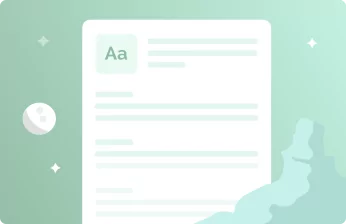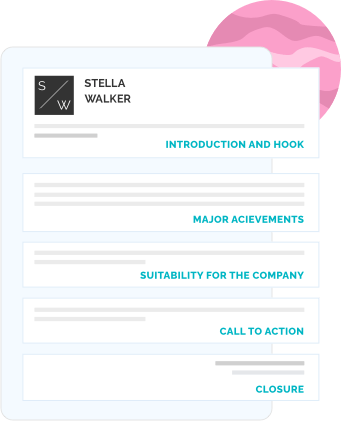
One of the most commonly given pieces of career advice is to do everything possible to make your cover letter and resume unique to each job application. So, with this in mind, why is it a good idea to use a cover letter template? First and foremost, it is important to remember that a cover letter template is not a pre-written cover letter. Instead, think of it as a skeleton design you can use to create an effective cover letter when you add your own information.
There are a range of benefits that come with using ResumeNerd professional cover letter templates. The most important benefits are:
In short, when you use a professional cover letter template you will find it easier to create tailored cover letters that look good and you will be able to write them at a quicker pace. This allows you to apply to more jobs while still submitting high quality cover letters and resumes. In fact, there are even creative cover letter templates for those who work in the arts or in creative technology roles. You can find more information on common cover letter formats at ResumeNerd.
While different cover letter templates will have distinct appearances and features, they should all contain the same basic structural components:
Your header and introduction should include your full name and contact information. This means your phone number, email address, and perhaps professional social media details. If you have LinkedIn, you can include that information in this section.
Your opening paragraph should be a summary of you as a job seeker and present your most relevant achievements. For example, if you were applying for a new job as a high school teacher you might write:
“I am a highly motivated and passionate teacher who takes a flexible learning approach. In my last position I implemented a hands-on learning segment to lessons that resulted in the grade average in my class rising by x in one year.”
When discussing why you are applying, you should mention the company name and the specific job title you are applying for as well as stating why you want to work with them. Once you have done this you should present reasons why you think you will fit in with the company culture. An example of this would be:
“I have long admired the student-first approach that [XYZ School] takes to education, and believe that my flexible approach to learning styles will enable students to reach their full potential.”
A cover letter is a very short document and should be no more than one page long in most cases. This means that you have a limited time frame in which to impress hiring managers. End your cover letter with a call to action that invites follow up contact in order to grab their attention. Sign off with a formal statement such as “Sincerely Yours”.
When you place your information into this structure, you will have a functional and complete cover letter. The quality and persuasiveness of the cover letter depends on the content and your writing. Use active language and tailor what you say to the job description to make a good first impression. Do not repeat information from your resume, however.


Modern cover letter templates are becoming more and more sophisticated and, thanks to resume builders, easy to access. Despite this, some might feel that templates are not for them. The truth is that most people could benefit from using even the most basic cover letter templates. Those most likely to benefit are:
Beyond this, even a simple cover letter template could provide many benefits to any job seeker. ResumeNerd has a free resume builder that offers a range of recruiter approved cover letter templates to choose from.
Yes, it is important that you include a cover letter with every job application that you submit. A cover letter presents a unique opportunity to present supplementary information about your skills and work experience. However, it is important to note that companies also expect cover letters. If you don’t provide one, the hiring manager may not take your application further
Unless a potential employer specifically requests another format, you should provide your cover letter as a PDF file. Our cover letter builder allows you to save your letter in PDF or MS Word formats.
Yes. You can take the time to create your own cover letter template and use it to create future cover letters. However, this is very time consuming and can be difficult. Using a cover letter template is far easier and can be more effective if these online templates are created by experts.